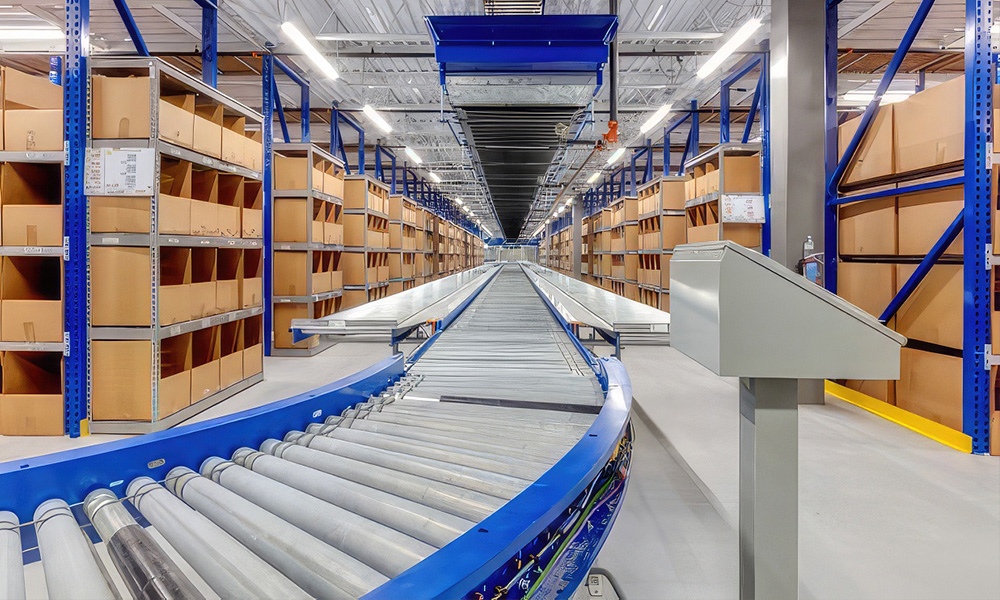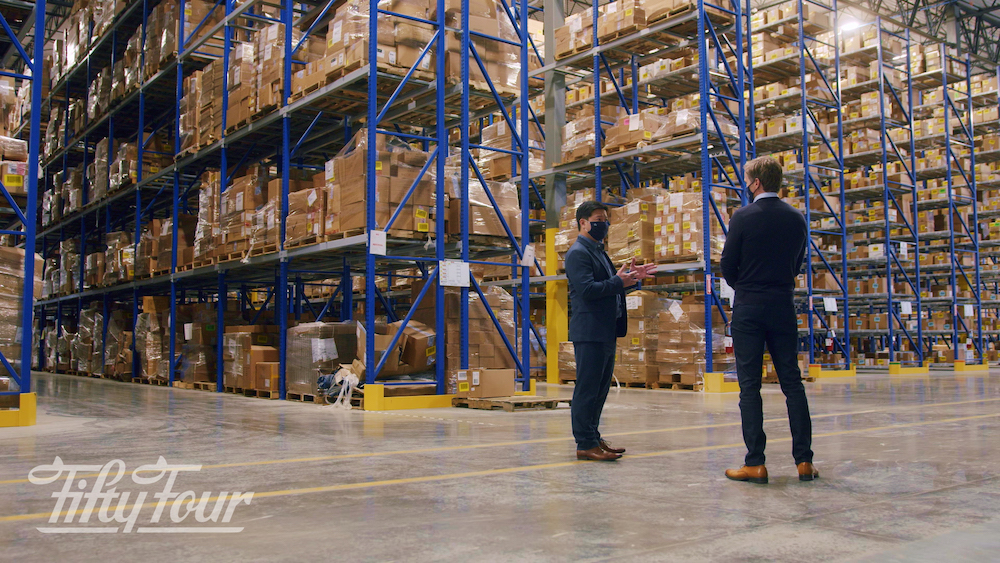
Warehouse inefficiency can quickly turn into a Halloween horror story, where every misplaced item and delayed shipment feels like a lurking monster in the shadows. Imagine navigating a cluttered, disorganized warehouse, like creeping through a haunted house with dead ends at every turn. The eerie silence is broken only by the echo of frustrated footsteps and the groan of scanners failing to find stock. Delays turn into nightmares, as inventory ghosts vanish without a trace, and orders become trapped in a web of inefficiency. When the warehouse runs like a haunted maze, it can scare away customers, haunt your profits, and turn the simplest tasks into a ghoulish ordeal!
Key Warehouse Efficiency Measures
Seriously, warehouse inefficiency can cripple operations, turning what should be a streamlined process into a chaotic mess. From misplaced stock and poor layout to slow order fulfillment and communication breakdowns, inefficiencies create a ripple effect that impacts productivity, customer satisfaction, and profitability. When systems fail to operate smoothly, workers spend more time searching for items, correcting errors, and dealing with bottlenecks, causing unnecessary delays and frustration. In today’s fast-paced market, even small inefficiencies can result in significant setbacks, making it critical to address and resolve these issues for a more effective and profitable warehouse operation.
Following are action items that can assist in producing increased warehouse and distribution center efficiency. Whether there are manual solutions or automated solutions being utilized in the warehouse, efficiency can be achieved with some strategic planning and implementation.
Optimize Warehouse Layout
Design the warehouse layout to minimize travel time, grouping high-demand items near packing areas and ensuring clear paths for forklifts and workers. Use efficient and productive storage systems that leverage the available space. Configure the warehouse floor to ensure a smooth workflow from receiving to shipping, utilizing less foot traffic. Make sure all storage areas are utilized to the greatest capacity and avoid cluttering the warehouse floor aisles with inventory. Both vertical and horizontal automated storage solutions can be utilized to achieve greater productivity in saving distances between task areas. Arrange products based on demand, size, and pick frequency to minimize picking time and reduce travel distance. Transporting inventory can be streamlined with conveyor systems and automated guided vehicles.
Implement Barcode and RFID Scanning
Use barcode or RFID systems to track inventory in real-time, reducing errors and speeding up stock retrieval. Coding of pallets, boxes and product gives warehouse workers quick access to information about each item. Vital information such as SKUs, warehouse arrival dates, packaging required, content within the inventory and potential hazardous material information can be identified and tracked from the receiving dock to the shipping dock. Each step of the processing should be recorded and used for assessing labor costs and operational costs. Review of the data can help determine how to organize workstations to streamline efficiency and productivity.
Implement Warehouse Management Software (WMS)
Leverage WMS to manage inventory, optimize picking routes, and automate order fulfillment processes. Automating the warehouse operations is an easy way to increase logistics efficiency. A WMS system coordinates all processes and guides workers in each task of the workflow. As a reporting and tracking tool, WMS systems can reduce errors in each step of the materials handling process. Increased speed and automated decisions are a huge benefit in optimizing efficiency in the warehouse. Today more warehouses and distribution centers are implementing technology and installing drones and robots to reduce inefficiencies. The opportunities are tremendous.

Standardize or Automate Processes
Develop and implement standardized processes for tasks such as picking, packing, and restocking to reduce errors and variability. Advance planning in receipt of shipments, sorting orders and generation of documentation can optimize efficiency. In a fast-paced warehouse or distribution environment utilizing a picking process that can prepare as many shipments as possible will increase efficiency. Selection will depend on the quantity of orders, the size of the warehouse and inventory specifics. A process that requires workers to travel to the various locations to pick items for a shipment can be extremely inefficient, both in speed and accuracy. Using a process that transports the inventory to a workstation makes a big difference. Once again, automating that process works best. Light systems and voice devices connected to a WMS system will give workers instructions as to product, quantity and location.
Cross-Docking
Minimize storage times by transferring incoming goods directly to outgoing shipments, reducing handling and inventory costs. Eliminating unnecessary transportation flows will allow greater efficiency. Cross-docking is an excellent method for shipping inventory as soon as it arrives on the loading dock. This saves movement of the inventory and storage space.
Optimize Inventory Levels and Cycle Counting
Use just-in-time (JIT) inventory or lean warehousing techniques to avoid overstocking or understocking, keeping inventory levels optimized. A lack of planning that causes stock outs can affect delivery to customers. Lack of planning can also cause overstocking which affects storage space, increases costs and possible depreciation of inventory. Technology serves a valuable purpose in tracking inventory. As mentioned above, a good warehouse management system can facilitate all aspects of inventory control. Perform regular cycle counts to maintain accurate inventory records without the need for large-scale annual audits. Conducting the cycle count every month or quarter will identify discrepancies in inventory. Inventory forecasting can be conducted based on historical sales data, trends and seasonal demands.
Regular Training for Staff
Ensure employees are well-trained on proper procedures, safety protocols, and new technologies to maintain a high level of efficiency. It is important that workers know how each section of the warehouse operates in order to create overall efficiency. A working knowledge of equipment and workstations is also helpful. All concepts from order picking strategy to value-added tasks to location management criteria should be explained to workers. Having workers cross-trained in a variety of tasks can also reduce warehouse inefficiency. Signage throughout the warehouse or distribution center can be crucial if the operation is large-scaled. Knowing where the restricted areas are or where there is heavy forklift traffic can reduce injuries. Prioritizing employee safety can help improve efficiency by boosting productivity, increasing morale and reducing downtime.
Lean Labor Scheduling
Optimize labor schedules based on peak times and demand to ensure adequate staffing levels without overstaffing during slow periods. Also identifying and reducing tasks that add little value is important. Lean logistics is an operations management method that identifies situations that can be improved and also avoids wasting resources’ labor during downtime.
Energy Efficiency
Install energy-efficient lighting and equipment to reduce costs and create a more sustainable warehouse environment. The move from internal combustion engine forklifts to electric forklifts can save money and storage space. Electric equipment can increase efficiency and run-times, offer a more environmentally friendly workplace that generates high power with low noise.
Monitor KPIs
Track key performance indicators (KPIs) such as order accuracy, picking time, and fulfillment rates to identify areas for improvement. Because a hectic warehouse or distribution center generates a huge amount of information every day, identifying efficiency metrics is key to a successfully-run operation. However, those measurements must be gathered and analyzed daily. Implementation of software specifically for warehouse operations is very helpful in tracking KPIs.
Planned Maintenance
Regularly maintain machinery and equipment to avoid unexpected breakdowns that could slow operations. Utilizing a planned maintenance schedule will ensure equipment is ready to perform when needed. Daily inspections of the components of the equipment can ensure top performance with reduced downtime and accidents.
By implementing these measures, warehouses can improve productivity, reduce errors, and ensure smoother operations. Ultimately, inefficiencies will be a distant memory like ghosts of the past.

54 Intralogistics Can Help
54 Intralogistics offers integrated solutions for warehouse automation to help maximize the efficiency and profitability of your warehouse. The 54 Intralogistics team of professionals are trained to know how your warehouse business operates and to offer advice on how to streamline the processes and improve efficiency. They can review your warehouse layout and specifications to ensure optimal processes from the loading/delivery dock to the packing and shipping area. Let us assist you in determining which solutions will work best for your warehouse operation.
